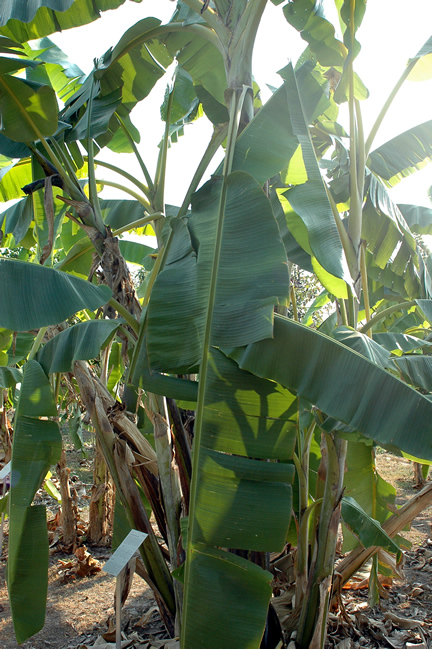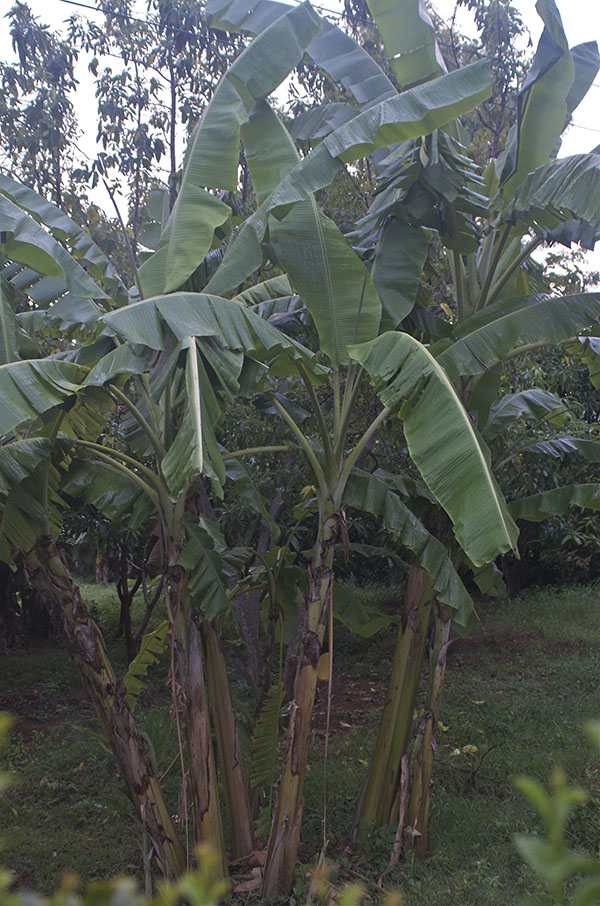
Perennials, Tropicals > Musa > Musa x paradisiaca > Musa x paradisiaca
Musa x paradisiaca
Banana, Plantain
Origin: Most cultivated bananas originate from Musa x paradisiaca and are thus triploid making them seedless and eatable.
| Family |
| Musaceae |
| Genus |
| Musa |
| Species |
| x paradisiaca |
| Category |
| Perennials, Tropicals |
| USDA Hardiness Zone |
| 9 |
| Height |
| 2 - 3 m |
Photographs
Description and Growing Information
Flowering Period
| Cultivation |
| Deep, well-drained alluvial soils are best, but bananas and plantains can tolerate a wide variety of soil conditions. Both banana and plantain are adapted to hot, wet, tropical lowlands. Mean annual temperatures are 27°C, with minimum and maximum daily temperatures of 22-32°C. Growth ceases when temperatures drop below about 13°C, and temperatures below 10°C can cause chilling injury to fruits. Plants require about 10 cm of rain/month, with dry seasons no longer than 3 months. |
| Growth |
| Fast |
| Pests |
| Most Musa species are susceptible to Panama disease caused by the soil borne fungus Fusarium oxysporum. There are four races or strains of the fungus, with the current race TR4 discovered in 1993. TR4 has already wiped out huge plantations in several southeast Asian countries and it is only a mater of time before it reaches plantations in Latin and South America. The fungi can persist in the soil for decades and is fungicide resistant hence it is impossible to eradicate or control once a plantation is infected. It is easily spread through contaminated soil on tools, clothing and footwear hence every effort should be made to maintain a bio-secure environment. |
| Habitat |
| Horticultural origin. |
| Flower Description |
| The inflorescence is a spike. Initially, it appears above the last leaves in an upright position, and consists only of a large, purple, tapered bud. As the bud opens, the narrow, white, tubular, toothed flowers are revealed, clustered in whorled doubled arrangement. |
| Fruit Description |
| An epigynous berry, fruit are borne in "hands" of up to 20 fruit, with 5 - 20 hands per spike. |
| Propagation |
| Rhizomes or pieces of rhizomes called "bits" or "eyes"; or tissue cultured plantlets. |
| Ethnobotanical Uses (Disclaimer) |
| The fruit is widely cultivated as a food source. The flowers are eatable and are served as a garnish in Asia alongside dishes such as Pat Thai. |


